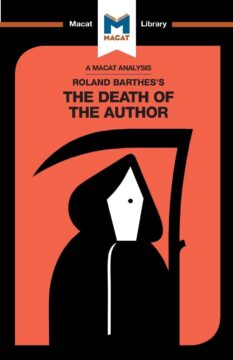Yascha Mounk at his Substack:
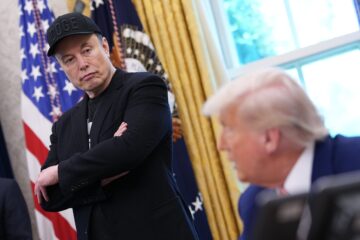 The “HUGEst” political alliance of the century is breaking apart before our eyes in suitably spectacular fashion.
The “HUGEst” political alliance of the century is breaking apart before our eyes in suitably spectacular fashion.
For the last months, the most powerful man in the world, Donald Trump, and the richest man in the world, Elon Musk, were a political item. Musk donated large sums to Trump’s campaign, lavished the newly reelected president with praise on his social network, and neglected his companies to pursue his side quest at the helm of the Department of Government Efficiency (DOGE). In return, Trump gave Musk unprecedented powers over the federal bureaucracy, staged joint press conferences in the Oval Office, and allowed him to lecture the assembled cabinet before rolling cameras. Nothing better symbolized the supposed “vibe shift” in America than the fact that Trump, practically a social pariah when he was first elected to the White House, could upon his return count on the outspoken support of the world’s most famous entrepreneur—and many other leading figures in Silicon Valley.
But it was also clear from the start that the match between Musk and Trump might prove stormy. The egos of both men are evidently outsized, their temperaments famously volatile. It did not take a genius to predict that their supposedly perfect match might prove short-lived, or even that it would end in acrimony. And yet, the speed with which their epic bromance has turned into an explosive feud is astonishing.
More here.
Enjoying the content on 3QD? Help keep us going by donating now.

 Twombly (1928–2011) has been a polarizing figure. He is best known for his large scrawly works in grayscale, sometimes called “blackboard paintings,” that resemble the marks of a second grader trying to learn cursive and failing. The artist has drawn (ha!) admiration from some of the greatest writers and critics of our era, from Roland Barthes and Robert Motherwell to Octavio Paz and Anne Carson. Yet few artists have also been on the end of more ridicule. Donald Judd called an early exhibit of Twombly’s “a fiasco.” Jackson Arn
Twombly (1928–2011) has been a polarizing figure. He is best known for his large scrawly works in grayscale, sometimes called “blackboard paintings,” that resemble the marks of a second grader trying to learn cursive and failing. The artist has drawn (ha!) admiration from some of the greatest writers and critics of our era, from Roland Barthes and Robert Motherwell to Octavio Paz and Anne Carson. Yet few artists have also been on the end of more ridicule. Donald Judd called an early exhibit of Twombly’s “a fiasco.” Jackson Arn  Most of us like to see ourselves as good, morally decent individuals. What’s more, we largely agree on what it means to be a decent person. You don’t just have to pay your taxes and not harm others. You have to go beyond that by, for instance, being kind, treating others with respect, and supporting your friends, family and neighbours. What our modern secular society lacks, however, is a clear idea of how a decent person should give to charity. We live in a world of staggering inequality and extreme need. There will always be more we could do. When have we given enough – not to be a saint, but to clear the bar of decency?
Most of us like to see ourselves as good, morally decent individuals. What’s more, we largely agree on what it means to be a decent person. You don’t just have to pay your taxes and not harm others. You have to go beyond that by, for instance, being kind, treating others with respect, and supporting your friends, family and neighbours. What our modern secular society lacks, however, is a clear idea of how a decent person should give to charity. We live in a world of staggering inequality and extreme need. There will always be more we could do. When have we given enough – not to be a saint, but to clear the bar of decency?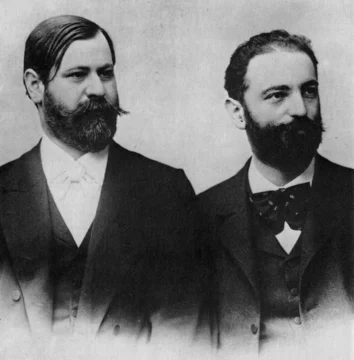 In Vienna, in late February 1895, a 30-year-old woman, Emma Eckstein, is about to undergo an operation. She has recently complained of a few health problems – mostly stomach pain and discomfort, some sadness, especially around her period. Luckily, a young Berlin doctor by the name of Wilhelm Fliess is there to help. He comes highly recommended by a long-time trusted family friend, himself a reputable physician, Sigmund Freud. They agree that Eckstein’s menstrual stomach issues can be addressed through a simple surgery on an altogether different body part – Fliess removes a bit of bone from inside her nose.
In Vienna, in late February 1895, a 30-year-old woman, Emma Eckstein, is about to undergo an operation. She has recently complained of a few health problems – mostly stomach pain and discomfort, some sadness, especially around her period. Luckily, a young Berlin doctor by the name of Wilhelm Fliess is there to help. He comes highly recommended by a long-time trusted family friend, himself a reputable physician, Sigmund Freud. They agree that Eckstein’s menstrual stomach issues can be addressed through a simple surgery on an altogether different body part – Fliess removes a bit of bone from inside her nose.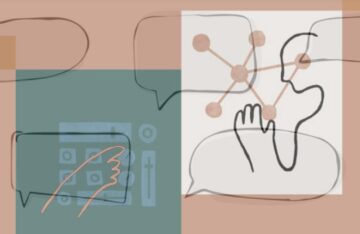 What does it mean to say, “I am aware,” when that sentence might be as much a performance as a report?
What does it mean to say, “I am aware,” when that sentence might be as much a performance as a report? The world is still recovering from the COVID-19 pandemic, which many researchers say probably started, or was at least amplified, at
The world is still recovering from the COVID-19 pandemic, which many researchers say probably started, or was at least amplified, at  O
O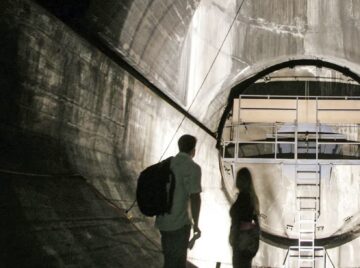 Faced with unrelenting Russian aggression and the simultaneous withdrawal of American military and diplomatic support, European countries across the continent are reinvesting in defence. But civilian protection – non-military measures for civil defence, including the construction of nuclear and air raid bunkers – has also emerged as a fresh priority. In January, Norway reintroduced a cold war-era
Faced with unrelenting Russian aggression and the simultaneous withdrawal of American military and diplomatic support, European countries across the continent are reinvesting in defence. But civilian protection – non-military measures for civil defence, including the construction of nuclear and air raid bunkers – has also emerged as a fresh priority. In January, Norway reintroduced a cold war-era During the First World War, a six-year-old Simone Weil learned that soldiers on the Western Front were not rationed sugar, so she refused to eat it until conditions improved. But whereas most leave such zealous empathy in childhood, Weil’s commitment to suffering with — or, at least, in the same way as — others became the hallmark of her work as a philosopher and political activist, as well as of her short, harrowing life. And though her ascetic self-denial tended toward self-erasure, a theme she would reflect endlessly upon in her writing, she couldn’t help standing out. At the École Normale Supérieure, the elite Paris institution of higher learning where she was among the first generation of women to be educated, she was known as “The Red Virgin,” a testament to her asceticism, her communism, and, as her peers saw it, her scorn for femininity. (An improvement, perhaps, on “The Martian,” the sobriquet given to her by her lycée teacher, the radical pacifist philosopher, Alain.)
During the First World War, a six-year-old Simone Weil learned that soldiers on the Western Front were not rationed sugar, so she refused to eat it until conditions improved. But whereas most leave such zealous empathy in childhood, Weil’s commitment to suffering with — or, at least, in the same way as — others became the hallmark of her work as a philosopher and political activist, as well as of her short, harrowing life. And though her ascetic self-denial tended toward self-erasure, a theme she would reflect endlessly upon in her writing, she couldn’t help standing out. At the École Normale Supérieure, the elite Paris institution of higher learning where she was among the first generation of women to be educated, she was known as “The Red Virgin,” a testament to her asceticism, her communism, and, as her peers saw it, her scorn for femininity. (An improvement, perhaps, on “The Martian,” the sobriquet given to her by her lycée teacher, the radical pacifist philosopher, Alain.) By using electrical microphones, amplifiers and electromechanical recorders, record companies could capture a far wider range of sound frequencies, with much higher fidelity. For the first time, recorded sound closely resembled what a live listener would hear. Over the ensuing years,
By using electrical microphones, amplifiers and electromechanical recorders, record companies could capture a far wider range of sound frequencies, with much higher fidelity. For the first time, recorded sound closely resembled what a live listener would hear. Over the ensuing years, 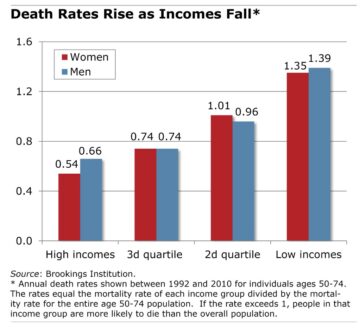 We examine the causal effect of health insurance on mortality using the universe of low-income adults, a dataset of 37 million individuals identified by linking the 2010 Census to administrative tax data. Our methodology leverages state-level variation in the timing and adoption of Medicaid expansions under the Affordable Care Act (ACA) and earlier waivers and adheres to a preregistered analysis plan, a rarely used approach in observational studies in economics. We find that expansions increased Medicaid enrollment by 12 percentage points and reduced the mortality of the low-income adult population by 2.5 percent, suggesting a 21 percent reduction in the mortality hazard of new enrollees. Mortality reductions accrued not only to older age cohorts, but also to younger adults, who accounted for nearly half of life-years saved due to their longer remaining lifespans and large share of the low-income adult population. These expansions appear to be cost-effective, with direct budgetary costs of $5.4 million per life saved and $179,000 per life-year saved falling well below valuations commonly found in the literature. Our findings suggest that lack of health insurance explains about five to twenty percent of the mortality disparity between high- and low-income Americans. We contribute to a growing body of evidence that health insurance improves health and demonstrate that Medicaid’s life-saving effects extend across a broader swath of the low-income population than previously understood.
We examine the causal effect of health insurance on mortality using the universe of low-income adults, a dataset of 37 million individuals identified by linking the 2010 Census to administrative tax data. Our methodology leverages state-level variation in the timing and adoption of Medicaid expansions under the Affordable Care Act (ACA) and earlier waivers and adheres to a preregistered analysis plan, a rarely used approach in observational studies in economics. We find that expansions increased Medicaid enrollment by 12 percentage points and reduced the mortality of the low-income adult population by 2.5 percent, suggesting a 21 percent reduction in the mortality hazard of new enrollees. Mortality reductions accrued not only to older age cohorts, but also to younger adults, who accounted for nearly half of life-years saved due to their longer remaining lifespans and large share of the low-income adult population. These expansions appear to be cost-effective, with direct budgetary costs of $5.4 million per life saved and $179,000 per life-year saved falling well below valuations commonly found in the literature. Our findings suggest that lack of health insurance explains about five to twenty percent of the mortality disparity between high- and low-income Americans. We contribute to a growing body of evidence that health insurance improves health and demonstrate that Medicaid’s life-saving effects extend across a broader swath of the low-income population than previously understood.